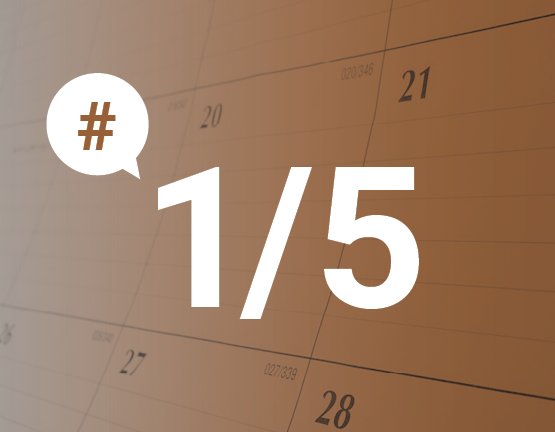Personal financial advisors usually advocate a tailored “life cycle” approach. This type of approach can be even more relevant when it comes to registered retirement savings plans (RRSP).
As shown below, RRSP contributions tend to peak when people are in their mid-thirties before easing off from about age 55 to 64, when the transition to retirement begins. We can also see that the more a person’s income grows, the more the person tends to contribute to an RRSP.
To help you take the long-term view, here is an overview of four life stages and the key questions you might want to consider during each one.
AGE 25 TO 30
- Your retirement horizon: very long
- Key question: do you need an RRSP?
At this stage, thinking about retirement is like looking through a telescope: the objective seems to be light-years away. You have more immediate priorities: repaying your student debt, saving for a down payment on a house, starting a family, and so on.
Nonetheless, this could be the right time to start investing: thanks to compound returns, anything you invest today could bring in much more than the same amount invested 15 years from now – and an RRSP could be an excellent choice since the returns would be tax-sheltered as they accumulate.
But you might also take into account another feature of the RRSP: the tax deduction. Since your income will likely be higher in a few years, your tax rate would also increase, and your contributions would result in larger deductions. It can often be advantageous to use a tax-free savings account (TFSA) for tax-sheltered savings first, even if you transfer some into an RRSP when the tax deductions become more attractive.
Note that both vehicles are appropriate for saving towards the down payment on a home. With both the RRSP and the TFSA, your capital will be tax-sheltered as it grows and you can withdraw tax-free amounts for your down payment. For the RRSP, you would do this by using the Home Buyers’ Plan (HBP), while for the TFSA your withdrawal would simply be tax free.
AGE 30 TO 50
- Your retirement horizon: long
- Key question: do you have an accumulation plan?
The years ahead could be the most important in terms of your retirement capital: your income might be substantial and there is still plenty of time to take advantage of tax-sheltered compound returns.
Something to keep in mind, however: it is a time when your expenses could also be very high: mortgage, the kids’ education… And you might even be living through the stress of a relationship breakdown.
In this context, your priority might be to put your retirement savings strategy on a more systematic basis. RRSP contributions, in particular, allow you to reduce your taxable income and to access tax credits for families. As well, you might want to ensure that your portfolio’s asset allocation is properly aligned with your investment horizon and risk tolerance. For example, if you previously had a short-term goal, your risk profile might now be too conservative.
AGE 50 TO 60
- Your retirement horizon: medium to short
- Key question: are you ready to accelerate?
This decade is often a catch-up period. As financial obligations (mortgage, children, etc.) decline, your saving capacity increases.
This could be the right time to sit down with your advisor and talk about setting up an acceleration strategy. Along with how much you are contributing, it might be relevant to take another look at your asset allocation.
If you are putting money in both an RRSP and a TFSA, the way you distribute your contributions between the two could also be an important decision. As it happens, once you reach age 71, you must convert your RRSP into a disbursement vehicle and make minimum withdrawals. These withdrawals could put you above the “clawback threshold,” at which point your Old Age Security pension (OAS) would be reduced. By comparison, TFSA withdrawals have no impact on your OAS benefits.
Finally, if you are in a stable relationship, you might want to plan an income-splitting strategy that would allow you to level your taxes during retirement. Spousal RRSP contributions are a frequently considered tool.
AFTER AGE 60
- Your retirement horizon: you are there
- Key question: do you have a disbursement plan?
On the verge of retirement, the challenge is to define a disbursement plan that will optimize your after-tax income.
In addition to an employer-sponsored pension plan (if any), retirees have a number of potential revenue sources: RRSP, TFSA, non registered savings, Old Age Security (OAS), Canada Pension Plan (CPP) or Quebec Pension Plan (QPP), life income fund (LIF). Your OAS and CPP/QPP benefits will be higher if you delay the start of payment. This doesn’t mean that you should necessarily do so. As well, keep in mind that the OAS has a clawback threshold, currently $79,054: if your income is higher than that, your benefits will be reduced.
The key question is when to draw from each of these sources of income.
Using the appropriate planning tools and being guided by your goals, your advisor can help you manage your retirement savings through all the different stages of your life.
The following sources were used to prepare this article:
Actualis, “Exploring compound returns.”
Châtelaine, “REER: combien investir et à quel âge ?.”
FBC, “How to use income splitting to reduce your tax bill.”
Government of Canada, “Life stages and your investment goals”; “Old Age Security pension recovery tax.”
Kiplinger, “Believing Is Seeing: How to Avoid Retirement Myopia.”
MD, “RRSPs and TFSAs in action: Case studies at different life stages.”
Merrill, “Investing through life’s stages.”
Statistics Canada, “Percentage of tax filers who contribute to a registered retirement savings plan by age group, Canada”; “Percentage of tax filers who contribute to a registered retirement savings plan by income group, Canada.”




